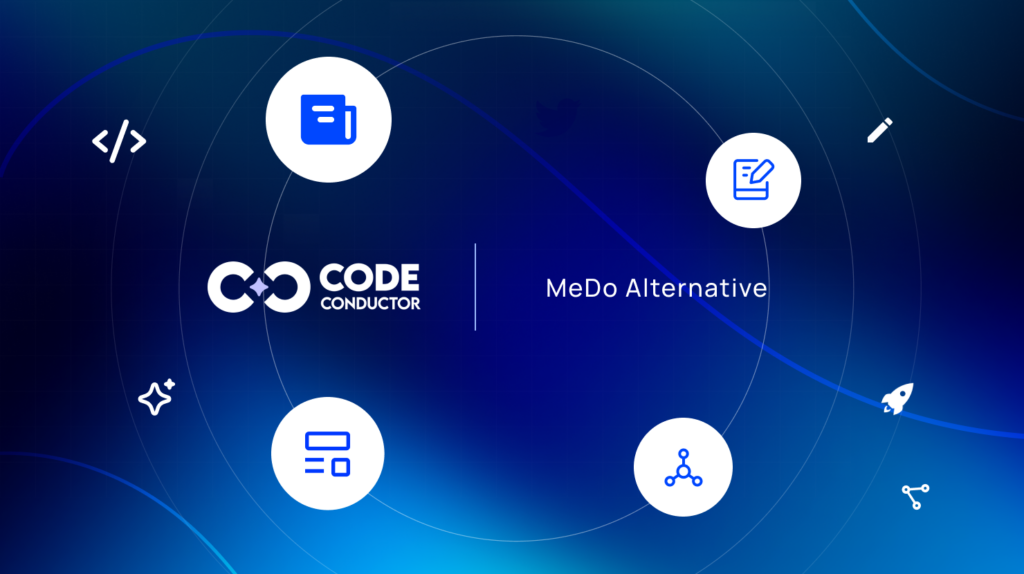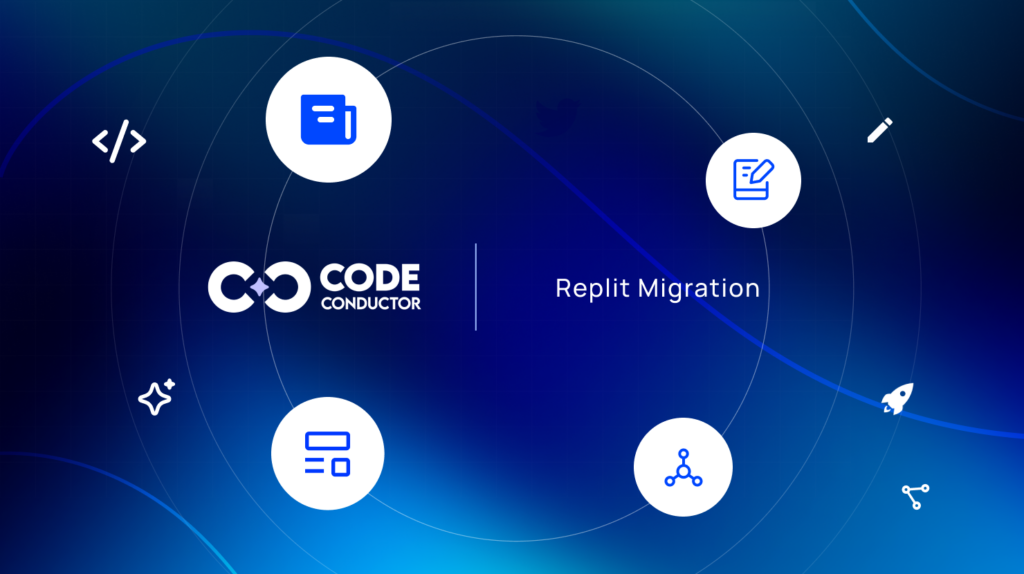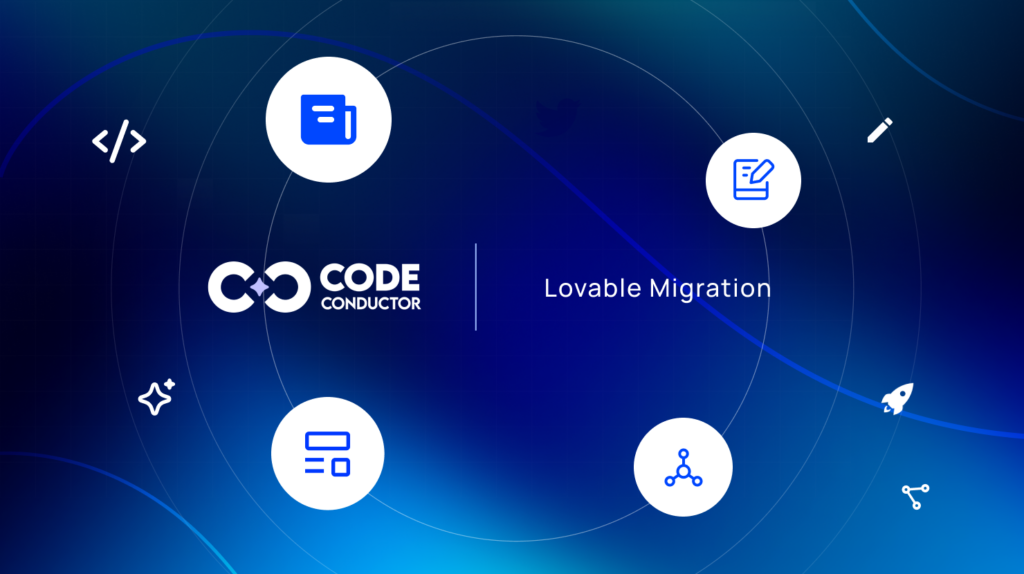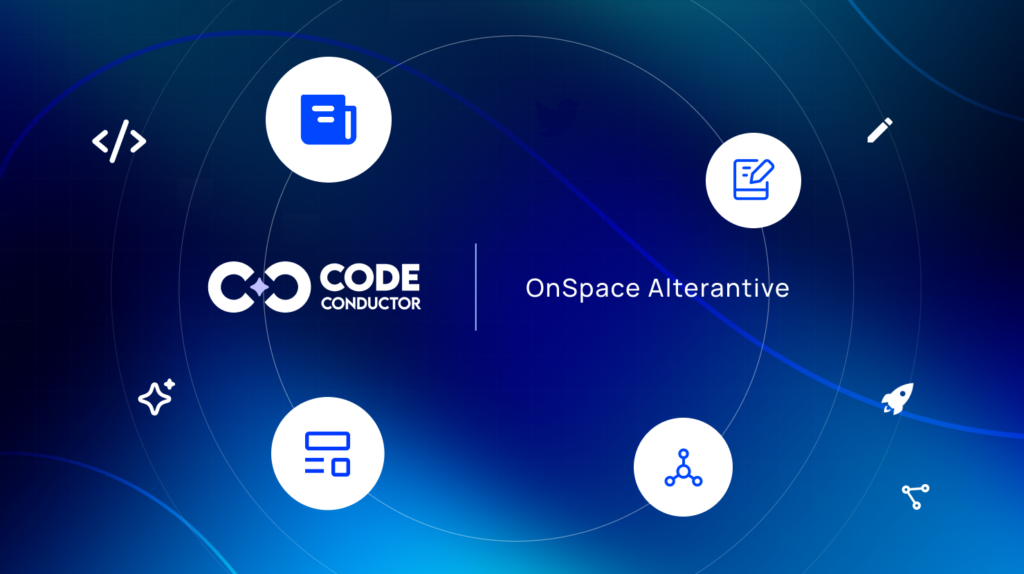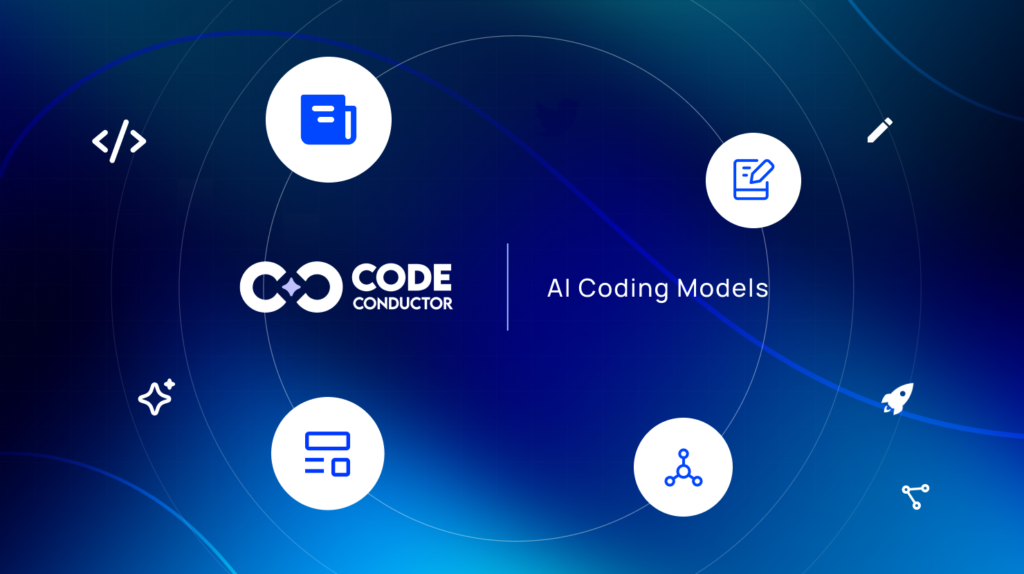Share at:
Windsurf has gained attention as a handy AI-powered code editor. It helps developers write code faster by suggesting completions and letting them interact with their files more naturally. But as more teams push to build full apps, not just individual functions, the limits of inline AI tools start to show.
If you’re a developer or a startup building something beyond just single-file scripts, you might be looking for a Windsurf alternative. You need something smarter, something that remembers context, connects workflows, and actually builds usable software.
That’s where CodeConductor comes in. It’s not just a coding assistant, it’s an AI platform designed to turn ideas into working applications.
In This Post
- Quick Take: Windsurf vs CodeConductor.ai
- What is Windsurf?
- Where Windsurf Falls Short?
- How CodeConductor Fills the Gaps Left by Windsurf
- Windsurf vs CodeConductor.ai: Feature-by-Feature Comparison
- Which One Should You Use: Windsurf or CodeConductor?
- Use Case Examples
- User Reviews:
- Call to Action
- FAQs: Windsurf Alternative
- Top AI Platform Alternatives You Shouldn’t Miss in 2025
Quick Take: Windsurf vs CodeConductor.ai
If you’re deciding between Windsurf and CodeConductor, here’s the quick breakdown.
Windsurf helps you write code faster inside your editor. It gives you AI-powered suggestions and lets you run small tasks with ease. It’s great for short, focused development work.
CodeConductor, on the other hand, goes beyond code suggestions. It’s a full platform that can create frontends, backends, APIs, and workflows, based on your prompt. It remembers what you’re building, even across sessions, and helps you launch real software, not just code snippets.
If you’re looking for a best Windsurf alternative that handles more than one file at a time and supports complex builds, CodeConductor is built for you.
What is Windsurf?
Windsurf (formerly Codeium) is an AI code editor designed to improve developer productivity. It integrates with popular editors like JetBrains and provides real-time code suggestions. The idea is to let you work with an AI that understands your codebase and helps you move faster inside your existing development tools.
Core Features of Windsurf:
- Inline Code Suggestions: It gives you real-time help as you type, offering autocomplete and fix suggestions.
- Agent-Based Editing: Windsurf includes “agents” that you can ask to refactor code, add documentation, or perform common programming tasks.
- IDE Integration: It works inside JetBrains and other supported IDEs, so you don’t need to leave your development environment.
- Limited File Awareness: You can select files or folders to give the AI more context, but this is often limited and doesn’t always work across larger AI projects.
- Cascade Feature: Allows chaining of multiple AI agents to work through tasks step-by-step.
Windsurf is useful for boosting day-to-day efficiency. But as soon as you need to build a full app or maintain complex logic across files, its limitations become clear.
Where Windsurf Falls Short?
While Windsurf is a helpful tool for editing code, many teams hit limits when using it for more complex development. Here’s where it tends to fall short:
1. Lacks Project-Wide Context
Windsurf can only handle a few files at a time. It doesn’t track changes or understand how everything in your project fits together. This makes it hard to build or refactor larger codebases.
2. No Long-Term Memory
Once you close a session, Windsurf forgets everything. There’s no persistent memory or understanding of past work, so you often have to repeat yourself when working on multi-step projects.
3. No End-to-End App Building
Windsurf helps you write code, but it doesn’t build apps. You still need to stitch together the UI, backend, and logic yourself. For many developers, this is the hardest part, and Windsurf doesn’t help much there.
4. Limited Workflow Support
You can trigger simple agents, but it’s not designed for building multi-step processes, branching logic, or combining tools like APIs and databases into one flow.
5. Performance & Accuracy Issues
Users have reported that Windsurf can sometimes suggest incorrect code, delete valid logic, or behave unpredictably in larger projects. It also struggles in environments like WSL or when handling complex repositories.
If you’re just editing one function at a time, these issues might not matter. But if you’re building full applications or trying to automate workflows, they add up fast.
How CodeConductor Fills the Gaps Left by Windsurf
CodeConductor was built for developers who need more than just suggestions in their IDE. It fills the gaps left by tools like Windsurf by helping you go from idea to working software, without patching everything together manually.
1. Understands Full Projects
CodeConductor works across your entire codebase. It keeps track of all your files, components, and logic so it can make meaningful changes without breaking things.
2. Remembers What You’re Building
With built-in memory, CodeConductor knows your goals, your previous steps, and the structure of your app. You don’t have to explain things twice, and it helps you pick up right where you left off.
3. Generates Frontend, Backend, and APIs
Instead of suggesting code line by line, CodeConductor creates usable components, like a signup form, an API endpoint, or a backend database connection, all from a simple prompt.
4. Supports Multi-Step Workflows
You can define workflows with multiple agents, each doing a part of the task. Whether it’s generating code, testing it, or deploying it, CodeConductor handles it with clear steps and branching logic.
5. Runs Anywhere You Need
Whether you want to use it in the cloud, deploy via Docker, or integrate into your CI/CD pipeline, CodeConductor adapts to your stack. No plugin limitations or IDE lock-ins.
6. Reliable and Transparent
Unlike Windsurf, CodeConductor is built for performance. It offers consistent responses, scalable usage, and full visibility into what’s happening behind the scenes.
If you’re looking for a true Windsurf alternative, something that doesn’t just suggest code but helps you build working products, CodeConductor gives you that power.
Windsurf vs CodeConductor.ai: Feature-by-Feature Comparison
To make it easier to compare, here’s a side-by-side look at what each platform offers:
| Feature | Windsurf | CodeConductor.ai |
|---|---|---|
| Code Suggestions | Yes – inline in IDE | No – focuses on complete component or app generation |
| Full App Generation | No | Yes – frontend, backend, APIs from prompts |
| Project-Wide Understanding | Partial – selected files only | Yes – full project context maintained |
| Persistent Memory | No | Yes – remembers workflows, files, and session history |
| Workflow Automation | Limited – single agents | Yes – multi-step agents with logic and branching |
| Deployment Support | No | Yes – deploy to Docker, cloud, or custom environments |
| Multi-Agent Coordination | No | Yes – tasks broken down and handled in parallel |
| Environment Flexibility | IDE-dependent | Works across CLI, cloud, containers, and CI/CD tools |
Windsurf is a helpful coding assistant, but if you’re trying to move faster from idea to working product, CodeConductor gives you the tools to do just that.
Which One Should You Use: Windsurf or CodeConductor?
Choose Windsurf if:
-
You want quick, inline code suggestions inside your IDE.
-
You’re working on small tasks or single files.
-
You prefer lightweight tools for simple edits and agent prompts.
Choose CodeConductor if:
-
You need to build complete apps, not just write code.
-
You want persistent memory, multi-step workflows, and real backend + frontend generation.
-
You’re looking for a true Windsurf alternative that can handle real-world complexity.
For startups, engineering teams, or even solo developers building production-ready tools, CodeConductor offers more structure, depth, and automation.
Use Case Examples
Here are a few real-world scenarios where developers switched from Windsurf to CodeConductor, and got more done, faster.
Example – 1: Building a Complete App from a Prompt
A solo founder needed to launch an MVP for a booking tool. With Windsurf, they could generate components, but assembling everything took days. Switching to CodeConductor, they described the app in a paragraph, and within an hour had a working frontend, backend APIs, and a database schema, all ready to deploy.
Example -2 : Refactoring a Growing Codebase
A startup using Windsurf struggled with maintaining a large codebase. Agents kept missing context and made risky changes. CodeConductor helped by understanding the full structure, tracking changes across files, and suggesting updates that didn’t break dependencies.
Eample -3 : Automating Internal Workflows
An engineering team used CodeConductor to build internal tools that automated API integrations and generated reports. Unlike Windsurf, which focused only on code edits, CodeConductor let them define entire workflows with logic branches and multi-agent coordination.
These examples show how CodeConductor goes beyond code suggestions, it helps teams and solo devs actually launch AI Web App in Minutes.
User Reviews:
Real feedback of CodeConductor
Francesca C. – Code Conductor Important tool
What do you like best about CodeConductor?
The code of conduct is used by my company for a series of behaviors to be observed towards colleagues and customers, it is very useful to understand all the regulations in your country.
What do you dislike about CodeConductor?
It helped me on how to behave with a customer, what to say and not say to colleagues so as not to offend their sensitivity and avoid problems of incorrect conduct.
What problems is CodeConductor solving and how is that benefiting you?
Helps with how certain corporate affairs should be resolved, such as managing corporate agreements with very important clients, avoiding making legal mistakes and getting into disputes with the country they belong to.
Real feedback of Windsurf
User – “Unreliable Service and Poor Customer Support”What do you like best about Windsurf?
It used to work well before, but then everything fall apart and every request is full of error.What do you dislike about Windsurf?
I had a terrible experience with Codeium. They charged me $100 without my consent and then stopped providing the promised features without any explanation. When I reached out to dispute the charge and seek clarification, they completely ghosted me. There was no response to my emails, and I felt completely ignored as a customer. This lack of communication and accountability is unacceptable. I would strongly advise others to avoid using Codeium. There are far better and more reliable alternatives out there that actually value their customers. Save yourself the frustration and money, this company is not worth it..
What problems is Windsurf solving and how is that benefiting you?
Codeium claims to solve problems like improving productivity and streamlining workflows, but in my experience, it did the exact opposite. Instead of benefiting me, Codeium created more problems. Their lack of communication and refusal to address my concerns made it clear that they don’t care about their customers. I would not recommend this product to anyone. There are far better tools out there that actually deliver on their promises.
Call to Action
If you’re building more than just one function at a time, it’s probably time to move beyond AI code completion tools.
CodeConductor lets you design, build, and ship real applications, fast. Whether you need a working web app, API backend, or multi-step workflow, it’s built to support your full process.
Looking for a true Windsurf alternative? Start your free trial of CodeConductor today or book a live demo with the team.
Best Windsurf Alternative – Try it Free
FAQs: Windsurf Alternative
Is CodeConductor a replacement for Windsurf?
Yes, if you’re looking to build full applications, not just write code faster. CodeConductor goes beyond the editor to help you create and manage working software.
Does CodeConductor provide inline code suggestions like Windsurf?
No. Instead of autocomplete in your IDE, CodeConductor focuses on generating complete components, workflows, and backend systems from prompts.
Can I use CodeConductor with my existing tools?
Yes. You can use it with your preferred stack and deploy to Docker, Kubernetes, or integrate it into your CI/CD pipeline.
Best Vitara AI Alternative – Try it Free
Top AI Platform Alternatives You Shouldn’t Miss in 2025
Share at:

Founder CodeConductor


